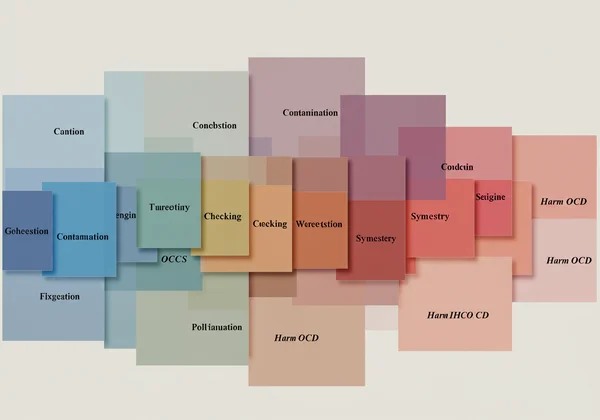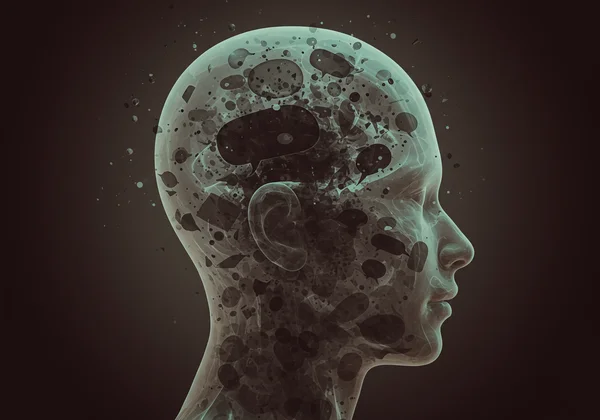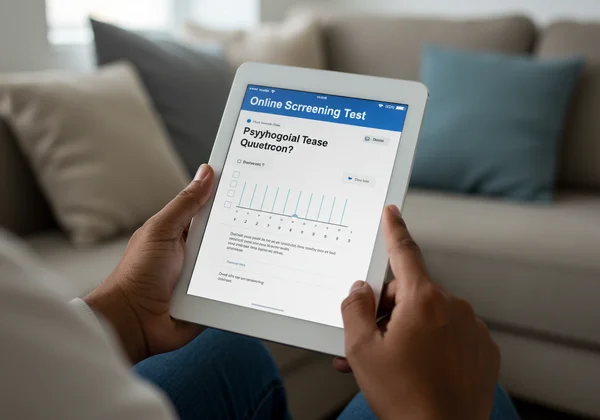Understanding OCD: Main Types & Symptom Dimensions
Have you ever searched online for the "types of OCD" and felt more confused than when you started? You're not alone. Many resources oversimplify Obsessive-Compulsive Disorder into a few neat boxes, but the reality is much more complex and personal. The journey to understanding OCD often begins with a single, pressing question: "What are the 4 types of OCD?" While this question is a common starting point, this guide will help you see beyond simple labels to understand the true nature of OCD symptoms.
Obsessive-Compulsive Disorder is not a one-size-fits-all condition. It manifests across a spectrum of symptom dimensions, each with unique intrusive thoughts (obsessions) and neutralizing behaviors (compulsions). Understanding these dimensions is the first step toward clarity. If you're seeking to understand your own patterns, a confidential OCD screening test can provide a structured way to explore these symptoms in a safe, private setting.
Debunking the "Four Types" Myth: Understanding OCD Symptom Dimensions
While the idea of "four types" is a popular simplification, clinicians and researchers think of OCD in terms of symptom dimensions. These are clusters of related obsessions and compulsions. A person can experience symptoms from one or several of these dimensions, and their intensity can change over time. This dimensional view is far more accurate and helpful than rigid categories. Let's explore the most recognized symptom dimensions.

Contamination & Washing Obsessions and Compulsions
This is perhaps the most widely recognized form of OCD. The core fear revolves around becoming contaminated by germs, dirt, chemicals, or even feeling "morally" or "emotionally" unclean.
- Common Obsessions: Intense fear of germs, illness, or disease; worry about bodily fluids; concern about household chemicals or environmental pollutants; feeling dirty or impure.
- Common Compulsions: Excessive or ritualized hand washing, showering, or cleaning; avoiding public places, doorknobs, or shaking hands; changing clothes frequently; seeking reassurance that they are not contaminated.
Checking & Doubting OCD Symptoms
This dimension is driven by a persistent fear of being responsible for causing harm or making a catastrophic mistake. The person struggles with an overwhelming sense of doubt and an urgent need for certainty.
- Common Obsessions: Fear of leaving the door unlocked, the stove on, or an appliance running, leading to fire or burglary; worry about having hit someone with their car; doubt about whether they have sent an inappropriate email or text.
- Common Compulsions: Repeatedly checking locks, stoves, and appliances; driving back to check for accidents; re-reading emails and texts endlessly before sending; asking others for reassurance that everything is okay.
Symmetry, Ordering, and "Just Right" Obsessions
Individuals experiencing this dimension feel an intense internal pressure to arrange things until they feel "just right." This isn't about being neat or tidy; it's a distressing need for symmetry, order, and exactness that can consume hours.
- Common Obsessions: A need for items on a desk or shelf to be perfectly aligned; distress when things are asymmetrical or uneven; preoccupation with arranging things in a specific order (by color, size, or number).
- Common Compulsions: Constantly arranging and rearranging objects; positioning items symmetrically; performing tasks in a specific, repeated sequence; feeling unable to proceed until the "just right" feeling is achieved.
Harm OCD, Sexual, and Religious/Moral Obsessions (Pure O)
Often referred to as "Pure O" (Purely Obsessional), this dimension involves intrusive, unwanted thoughts of a violent, sexual, or blasphemous nature. The "compulsions" are often mental rituals rather than observable actions, which can make it hard to recognize. A person with these obsessions is terrified they might act on them, even though it goes against their true values.
-
Common Obsessions: Fear of harming oneself or a loved one; unwanted and disturbing sexual thoughts about children, family members, or one's own identity; fear of having blasphemous thoughts or offending God (moral scrupulosity OCD).
-
Common Compulsions: Mentally reviewing actions to ensure no harm was done; praying or performing other mental rituals to cancel out a "bad" thought; avoiding triggers (like knives or being alone with a child); seeking constant reassurance of their good character. If these thoughts resonate, a confidential pure o test can be a helpful starting point.

Hoarding Disorder and its Connection to OCD
While now classified as a separate diagnosis in the DSM-5, hoarding was long considered a symptom dimension of OCD. It involves the persistent difficulty of discarding possessions, regardless of their actual value. This difficulty results from a perceived need to save items and the distress associated with letting them go. It differs from collecting, as the clutter can make living spaces unusable and unsafe.
Why Understanding OCD Dimensions Matters for Self-Assessment
Recognizing that OCD is a spectrum of experiences rather than a few simple categories is empowering. It validates your unique struggles and moves you beyond the frustrating search for a perfect label. Understanding these dimensions is a crucial part of any meaningful OCD self test.
Beyond Labels: Identifying Your Specific Challenges
When you see your experiences reflected in these dimensions, it can bring immense relief. You're not "crazy" or "bad"—you're dealing with specific patterns of thought and behavior that are characteristic of OCD. This understanding allows you to articulate your challenges more clearly, whether to yourself, a loved one, or a future therapist. It shifts the focus from "Do I have OCD?" to "What specific obsessions and compulsions are impacting my life?"
How Our Scientifically-Backed Test Can Help
This is where a well-designed OCD screening test becomes invaluable. Our free and confidential test is built on the principles of established psychological assessments like the Obsessive-Compulsive Inventory (OCI). It doesn't give you a simple "yes" or "no." Instead, it helps you map your experiences across these very symptom dimensions.
By answering the questions, you get a clearer picture of which themes are most prominent for you. For even deeper understanding, you can choose our optional AI-powered report, which provides personalized insights into how these symptoms may affect your daily life. This accurate ocd test serves as a safe and reliable first step toward self-awareness.

Taking the First Step: Your Path to Clarity and Support
Understanding the diverse landscape of OCD symptoms is a powerful step toward reclaiming your mental space. It moves you from confusion to clarity, helping you see that your struggles are valid and understood. Remember, this knowledge is not a diagnosis, but a tool for empowerment.
You don't have to navigate this uncertainty alone. If this article has resonated with you, the next step is to gain personalized insight. Take our free OCD test today to confidentially explore your symptoms. It’s a simple, secure, and insightful way to begin your journey toward understanding and support.
Frequently Asked Questions About OCD Types and Self-Assessment
Is it OCD or just anxiety? How can I tell the difference?
While OCD is an anxiety disorder, the key difference lies in the presence of obsessions and compulsions. General anxiety often involves persistent worry about real-life concerns (finances, work), whereas OCD involves unwanted, intrusive thoughts (obsessions) that a person tries to neutralize with specific behaviors or mental acts (compulsions). An ocd disorder test can help clarify if your symptoms align with the OCD pattern.
Can I truly test myself for OCD at home?
You can use a screening tool, but not self-diagnose. A reliable online OCD test, like the one we offer, serves as an excellent preliminary screening tool. It is designed to help you identify potential symptoms based on scientific principles. However, it cannot replace a formal diagnosis from a qualified mental health professional, which is essential for a treatment plan.
What should I do if my self-test suggests I might have OCD?
First, breathe. A screening result is not a final verdict but a piece of information. The best next step is to share these results with a doctor or a mental health professional (like a psychologist or psychiatrist). They can conduct a comprehensive evaluation and discuss evidence-based treatments like Cognitive Behavioral Therapy (CBT) and Exposure and Response Prevention (ERP). Your results can be a valuable starting point for that conversation. Get confidential insights to prepare for that discussion.